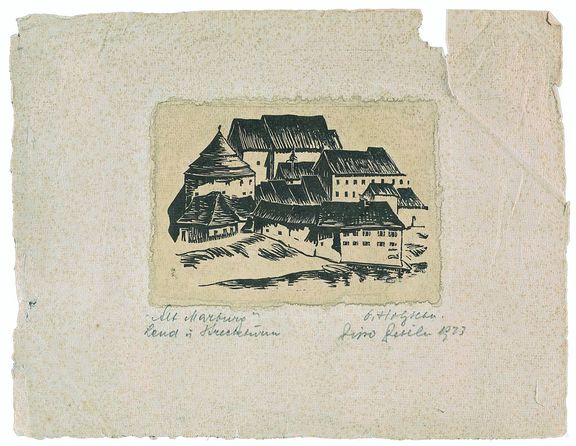Regional Archives Maribor
-
to
3 Dec 2015
29 Jan 2016
The exhibition Z vlakom čez mejo / Vlakom preko granice in the framework of the project SIHeR 2.0, organised in cooperation with the Regional Archives Maribor, Historical Archives Ptuj and Historical Archives Celje, and supported by the Embassy of the Republic of Slovenia Zagreb,
-
to
26 Jan 2012
27 Feb 2012
Cities and towns along the Croatian-Steiermark border, SIHeR project in collaboration with Historical Archives Ptuj, Regional Archives Maribor and Historical Archives Celje
History
Formally public archives in Maribor were first established in 1933, when the Regulation on County Archives Maribor was adopted and archives were established as public institutions. They covered the region of former Slovenian Styria and parts of Koroška and Prekmurje. Between 1941 and 1951 the Archives ceased to work and were incorporated into the museum of Maribor. They were established again in 1952 with official name State Archives of the Peoples Republic of Slovenia – branch office Maribor, which was renamed in 1963 to the name valid still today.
Mission
Besides safeguarding of the archival fund the professional archival activities include the arrangement, description, and protection of the contents of kept archives. Different areas of research include archival science, historiography, information science and other related human sciences.
The Regional Archives’ remit includes the following state administrative units (territorial divisions other than municipalities used in state governance): Dravograd, Gornja Radgona, Lenart, Lendava, Ljutomer, Maribor, Murska Sobota, Pesnica, Radlje ob Dravi, Ravne na Koroškem, Ruše, Slovenj Gradec and Slovenska Bistrica. The unit in Ravne na Koroškem covers the Koroška region.
Collections
The Regional Archives of Maribor houses documents dating from 1246 to 1865. Highlights include 43 charters related to the Jews and various thematic collections, including a collection of records on the revolutionary events in Slovene Styria in 1918-1919; records of manors and estates (Fala, Bistrica Castle, Konjice-Oplotnica-Žiče) since the 15th century; records of monastic orders (Studenice, the Carthusian monastery in Žiče) since the 17th century; continuous records of the towns of Maribor and Slovenj Gradec and the market of Ljutomer since the 19th century (some parts even older); records of municipalities, mostly since 1918; Evangelical Seniority and Evangelical Parish Records of Maribor; records of state administrative offices, courts, companies, banks, economic associations and institutions since the middle of the 19th century; records of governmental, county, district, town and municipal people's committees and other political organisations from the period since World War II; and private records of Slovene-Styrian historians (F Baš, F Kovačič, M Slekovec, J Mravljak, E Pertl, F Mlinarik), scientists (K Štrukelj), politicians (M Ploj, F Rosina, J Černec, J Vošnjak), writers (D Trstenjak), composers (Hugo Wolf) and others.
The Library of the Regional Archives of Maribor has over 13,000 inventory units and offers services to employees of the archives sector as well as to visitors to the reading room.
There are also two exhibition spaces: Archivum is 66 square metres with 30 linear metres of wall space, while Hades is 42 square metres with 18 linear metres of wall space.
Venues
The Regional Archives of Maribor organises international research camps on the Slovene-Hungarian border and exhibits selected archival records. An international professional meeting is organised annually at Radenci.
International Cooperation
Two employees of the Archives are members of the ICA Committee on Archival Buildings and Equipment and one is a member of the ICA Committee on Electronic and other Current Records.
The archive takes part in the European project EuropeanaLocal, which is in Slovenia coordinated by National and University Library (NUK).
Education
There are various education activities organised throughout the year. Special emphasis is given to the professional training of a broader public in the field of the protection and preservation of arhichives. Training and lectures are provided for scholars, students and other users.



